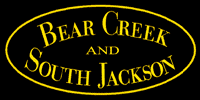 |
 |
 |
Car Cards and Way Bills |
CC&WB Freight Fowarding Car Cards - Way Bills - Moving Freight - an example - Offspot Waybills - Re-staging - Advantages/Drawbacks |
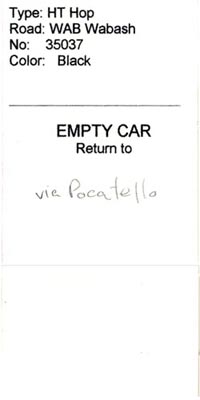 Empty Car Card |
Car Cards |
Waybills |
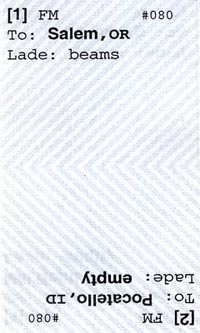
Front of way bill showing cycles 1 and 2. 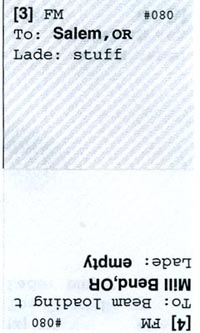 Back of way bill showing cycles 3 and 4. 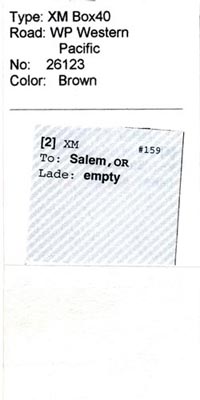
Car Card with Way Bill inserted in it's pocket showing cycle #2 with a destination of Salem, Oregon. |
|
RS - food to Mill Bend cold storage FM - mt to Mill Bend beam loading HT - coal to Redland team track XM - mt to Salem TA - diesel to Salem XM - stuff to Salem XM - stuff to Salem LO - mt to Salem GB - pipe to Salem XM - mt to Salem XM - stuff to Portland XM - lumber from Mill Bend to Portland XM - glass from Redlend to Salem HT - mt to Salem RS - mt to Salem XM - lumber from Mill Bend to Portland XM - glass from Redlend to Salem HT - mt to Salem RS - mt to Salem XM - mt to Salem TA - diesel to Salem XM - stuff to Salem XM - stuff to Salem LO - mt to Salem GB - pipe to Salem XM - mt to Salem XM - stuff to Portland |
Moving the Freight - an example |
Meanwhile back in South Jackson the yardmaster is sorting the cars he received by desitination. |
Special waybills - offspot |
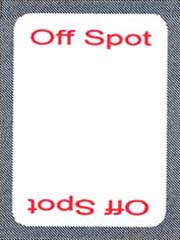
An offspot special waybill. 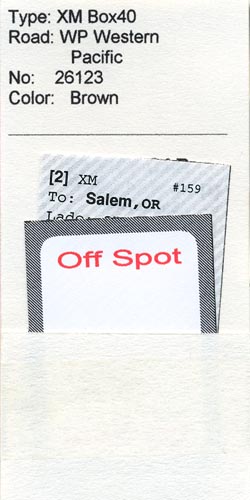 A car card with an offspot special waybill in front of the regular waybill. |
Re-staging Between Op Sessions |
of carcard and waybill freight routing | ||
To top. |